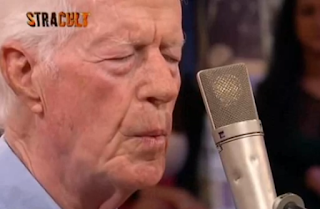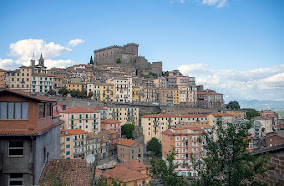Azeglio Vicini - 1990 World Cup coach
Semi-final heartbreak ended dream of victory on home soil
Azeglio Vicini, the coach who led Italy to the semi-finals when the nation hosted the 1990 World Cup finals, was born in the city of Cesena in Emilia-Romagna, on this day in 1934. Vicini worked for the Italian Football Federation for an unbroken 23 years in various roles, having joined their technical staff in 1968 after less than one season as a coach at club level. He was head coach of the Italy Under-23 and Italy Under-21 teams before succeeding World Cup winner Enzo Bearzot as coach of the senior Italy side in 1986. Vicini's brief with the senior team was an onerous one. When Italy won the right to host the 1990 World Cup finals there was an expectation among Italian football's hierarchy that a nation with such a proud history should be capable of winning the tournament on home soil. Responsibility for producing a team good enough rested squarely on Vicini's shoulders but he was well prepared, having guided his under-21 team to the later stages of the European Championships consistently and brought through the likes of Roberto Mancini, Giuseppe Giannini, Roberto Donadoni, Walter Zenga and Gianluca Vialli. Read more…
__________________________________________________________
Giampiero Moretti - entrepreneur racing driver
Gentleman racer behind ubiquitous Momo accessories brand
Giampiero Moretti, a motor racing enthusiast who made his fortune almost literally by reinventing the wheel, was born on this day in 1940 in Milan. Known as 'the last of the gentleman racers' because of his unfailing courtesy, refined manners and an unquenchable determination to succeed on the track, Moretti made a profound mark on the sport through his ergonomic rethink of the racecar steering wheel. Steering wheels were traditionally large and made of steel or polished wood but Moretti saw that reducing the diameter of the wheel would cut the effort needed by the driver to steer the car, helping him conserve energy and creating a more comfortable driving position. He also covered the wheel with leather to improve the driver's grip, and gave it a contoured surface. He made the first one for a car he planned to race himself and there was soon interest among other drivers and he began to make more wheels. His big break came when Ferrari invited him to design a leather wheel for their Formula One car. Enzo Ferrari himself was a traditionalist who took some persuading that the tried-and-tested old steering wheel was not the best. Read more…
_________________________________________________________
Fulco di Verdura - jeweller
Exclusive brand favoured by stars and royalty
The man behind the exclusive jewellery brand Verdura was born Fulco Santostefano della Cerda, Duke of Verdura, on this day in 1898 in Palermo. Usually known as Fulco di Verdura, he founded the Verdura company in 1939, when he opened a shop on Fifth Avenue in New York and became one of the premier jewellery designers of the 20th century. Well connected through his own heritage and through his friendship with the songwriter Cole Porter, Verdura found favour with royalty and with movie stars. Among his clients were the Duchess of Windsor - the former socialite Wallis Simpson - and stars such as Greta Garbo, Joan Crawford, Rita Hayworth, Katharine Hepburn, Paulette Goddard, Millicent Rogers and Marlene Dietrich. Although Verdura died in 1978, the company lives on and continues to specialise in using large, brightly coloured gemstones. The most expensive gemstone ever sold at auction, the so-called Oppenheimer Blue diamond, was set in a ring designed by Verdura. It changed hands at Christie's in Geneva for $50.6 million (£34.7 million) in May 2016. The last to bear the now defunct Sicilian title of Duke of Verdura, Fulco grew up in aristocratic surroundings. Read more…















